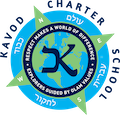The study of Hebrew offers several particular advantages.
-
The renaissance of a language and its role in the creation of culture and society is deeply instructive. Hebrew is a language that has gone through a profound revitalization over the past century and a half from a classical to a living language. The modernization and secularization of the language and its transformation to a spoken, cultural medium has been central to the development of a secular Hebrew speaking society and culture in the land of Israel. This unique historical occurrence offers meaningful opportunities for students to explore the evolution and purposes of language and its function in building and sustaining communities worldwide.
-
Hebrew also powerfully exemplifies the capacity of language to unite people across time and space. Prior to its revitalization, Hebrew served as a connector of communities around the world. The study of Hebrew language, therefore, is a valuable vehicle for encouraging students’ development as global citizens and fostering students’ commitments to dialogue and understanding.
-
Hebrew is becoming increasingly relevant in the world of international business, mastery of the Hebrew language has pragmatic benefits as Israel’s influence in the world markets continues to expand. Israel is only second to the United States in having the greatest number of companies listed on the NASDAQ exchange, recognized worldwide as an indicator of the cutting-edge of industry developing the technology of the future. Further, Israel is becoming an increasingly significant American economic partner and player in the global economy. In light of Israel’s growing influence and prominence, fluency in Hebrew and modern secular Israeli culture is a profound asset for students’ futures.
At the heart of our school’s mission is to provide an innovative language program that supports students to become proficient in Modern Hebrew. We support this mission through a partial-immersion environment in which we use the Hebrew language in various aspects of the school program and curriculum in addition to a daily period of formal Hebrew instruction. Selected subjects, such as art, music, social studies and physical education are conducted in Hebrew and English through a co-teaching model with both an English-speaking instructor and a Hebrew-speaking instructor. All formal and informal communication between students and the Hebrew instructor are exclusively in Hebrew. For example, all meals at Kavod Elementary (snacktime and lunch) are looked at as instructional opportunities and are conducted in Hebrew.
We recognize that language acquisition often happens in a non-linear way. Students can often listen to and recognize Hebrew words long before they are comfortable using them in their own writing or speaking. Therefore, we use the “Proficiency Approach” to teach the Hebrew language. The Proficiency Approach assists students develop at different rates in all four language skills: listening, speaking, reading and writing.
Kavod Elementary’s dual language program is built on findings from major educational research studies. Research shows that children gain academic advantages when they begin the study of a foreign language at an early age, not the least of which is their development as individuals who are bilingual and bi-literate. The American Council on the Teaching of Foreign Languages (ACTFL) has documented that language learning supports academic achievement, provides cognitive benefits to students, and affects attitudes and beliefs about language learning and other cultures. Research also shows that language learners develop a more positive attitude toward the target language and/or the speakers of that language, as well as speakers of languages other than their native language.
By the end of year 1 of Hebrew, most students will be between the Junior Novice-Low and Novice-Mid levels (Based on ACTFL World Languages Standards) in oral communication.
Most students will be able to:
Speaking: use, isolated words, phrases of two or more words, and/or memorized phrases or sentences in predicable topic areas, such as: biographical information, home, school, seasons & weather, clothing, numbers 1-20, days of the week, animals.
Listening comprehension: Understand predictable questions, statements, and commands in familiar topic areas (with strong contextual support), though at slower rate than normal rate of speech and/or with repetitions.
Reading and writing: Write most of the Hebrew letters with a high degree of accuracy, print first name from memory. and recognize a few familiar words related to learned topics.

